http://en.wikipedia.org/wiki/Nick_Alkemade
http://en.wikipedia.org/wiki/Alan_Magee
http://en.wikipedia.org/wiki/Ivan_Chisov
Si vous en avez d'autres histoires comme ca, je suis preneur



elle avait pas sauté de son plein gré quand meme ...firstdate a écrit : Concernant les chutes libres y avait pas une histoire avec une hôtesse de l'air qui à sautée depuis je sais pas combien de mètres d'un avion sans parachute, et qui est atterrie dans les arbres ? Il me semble que c'était une Russe mais pas sûr...
@+


“Later in 1939 on 30 November, Soviet paratroopers had the distinction of making the first combat jump in history when they dropped at Petsamo and other points behind the Finnish lines during the Soviet invasion of Finland. Due to poor navigation on the part of pilots and quick action on the part of Finnish snipers who picked off many as they landed, few of these paratroopers actually made it into combat. Those who did fought with courage, and many had even jumped without parachutes into deep snow drifts.”
For yet another exotic method of airborne deployment, consider the following, again from Thompson’s book, pages 10-11:
“Although in general the Soviet paratrooper jumped with his equipment attached to his person, some provision was made for equipment containers. In the older TB-3, equipment containers were slung under either the fuselage or wings and dropped by parachute. Alternatively, a rather odd trolley system was used in which a group of padded containers was lashed to a wheeled trolley slung beneath the fuselage. Then, making use of the TB-3s incredibly low stalling speed, the pilot would fly just above the ground and release the trolley, which, theoretically, would roll along the ground until it stopped. At this point the previously dropped parachutists would rush to the trolley and unpack their mortars, DP-28 machine guns, or antitank rifles. An even stranger use of this trolley system was to deliver troops who rode in the same padded containers as the equipment. When the trolley stopped, out they would pop like so many Ivans-in-the-boxes. Obviously, the trolley system was dependent on very flat terrain and little use was made of it for delivering supplies during the war. According to German reports, however, the Soviets did drop troops in containers on at least one occasion. Unfortunately, the Germans were in control of the drop zone, and the Red soldiers were slaughtered as they emerged from their capsules.”
Unfortunately, Thompson does not cite any source for these “German reports”
Still, I have done a bit of Internet digging myself, and I must now admit Soviet accounts of at least one case of Red paratroopers without parachutes exist. Among other results I have come up with the following:
1. A woman by the name of Svetlana Nizovsteva recounted the following story reportedly told her by her grandfather, Petr Federovich Nizovtsev.
“He was a member of a Siberian division which marched past Stalin (during November 7 celebrations) on the Red Square and from there directly into the battle near Moscow.
Battalion by battalion marched the Siberians, in order to stop the attack of the Germans. To the northwest of Khimki (a Moscow suburb) already there were moving menacing German tanks. The commander of the Siberian battalion stopped. Guys, it is necessary, he told his troops, to stop the tanks. Right over there is an airfield, who wants to ‘fly’? And the entire battalion made a single step forward. The commander was pleased, and led them to the airplanes.
But then there was an unexpected unpleasantness. There were no parachutes. The commanders looked around. No one wanted to send the Siberians to a certain death – to jump without parachutes onto tanks, and to assault them.
Then the commander said ‘Behind us is Moscow, and ahead of us, are panzers. We have to stop them. But without parachutes. Winter can help us. Snow. It might be possible to cushion the fall. There is such a chance. We can’t give such an order, but are there volunteers?”
Again the entire battalion took a set forward. The Fritzes (”Gansi” in the Russian text) were shocked in their tanks, when from the snowy sky white ghosts fell on them without parachutes, and immediately opened fire. Practically all the Siberians remained alive in the engagement. Twelve per cent died. Not a single German panzer advanced.”
2. Military author Oleg Svatalov in a book on the defense of Moscow, chapter “Mozhaisk airborne assault”
The short version of the lead-up to the incident is that there is a regiment of Siberian infantry drawn up near Moscow, and Georgy Zhukov himself asks for volunteers for a jump without parachutes, because panzers are advancing on Moscow and they need to be stopped.
As in the previous account an entire battalion takes one step forward, at which Zhukov says “Fine fellows! No other army in the world has soldiers like these!” The soldiers then load board “bombers” and fly off in the direction of the Mozhaisk. Svatalov’s text on the actual jump is as follows:
“The German column moved efficiently and deliberately along the snowy road. Suddenly ahead of them appeared low-flying Russian airplanes, so low they appeared to be about to land. At an altitude of three or four meters like hail fell humans. Their landings in the snow made white clouds like earth after the explosion of artillery rounds. The men were wearing white camouflage uniforms, and as soon as they landed the white explosions turned into flaming sources of anti-tank grenades and bursts of automatic weapons fire, sowing panic and death in the German column. The ghosts in white coats charged the tanks with grenade bundles and firing anti-tank rifles. The assault was so violent and unexpected, that the Germans for a long time didn’t know what to do. The Russians, fearless in their assault, brought death to the Germans. Anti-tank rifles hammered, grenades detonated and panzer after panzer exploded.”
3. The Soviet defector Viktor Suvorov in his anti-Stalin book “Icebreaker” describes Stalin’s willingness to force people to jump from airplanes without parachutes as more proof Stalin was an inhuman monster. He makes no reference to the techniques use in combat.
Speaking of which, I am willing to bet an entire hryvna David Glantz in his History of Soviet Airborne makes no reference to the “without parachutes” tale.
I can add that the standard Soviet troop carrying planes in the early days of the war were the TB-1 and TB-3, which were normally bombers. Both had big wing area and relatively low max speeds (178 and 197 kph respectively) so I suppose a stall speed under 100 kph would have been possible, but less than that no way: we’re talking about a two and four-engine bomber, respectively.
At least in near-Moscow case snow was not 2 meters deep: that depth is only possible in the far north, and then rarely. One meter on ground in November outside Moscow is not just abnormal, but just about unheard of. I imagine since the winter was so bad a meter snow cover was possible, but two or more is not credible. Moscow is not Antarctica, it’s not even Siberia. People do live there year-round, the place has a pretty hot summer, seasons, etc. l.
Which is not to say the snow near Pechenga/Pentsamo wouldn’t be deeper. That said, and I’m getting off the subject, the Gulf Stream tends to keep things relatively warm and to moderate weather: Murmansk for practical purposes is an ice-free port. So I am a bit suspicious of reports of snow drifts two and three meters deep in that vicinity.
Snow cannot reach density beyond 0.10. The crystals won’t compress any further (but turn into glacier instead, or melt). Snow is normally around 0.01-02, even in thaw. It is at it’s hardest in severe dry cold, when hardened surface layers are formed. That’s how they build igloos. Such surfaces will not affect a person falling into snow very much in terms of impact (brittle), but it can cut him up severely with sharp ends. Other than that a falling human body can always be softly collected by snow covered ground. Theoretically.
The actual problem with the theory is depth. It needs to be pretty darn deep to softly collect a guy falling from the sky. Simple application of Newton’s law I believe. Mass multiplied by speed squared, divided by 2, to have the impact of the guy. Given the impact absorption and rate of breaking the fall of a ground with the mass of snow and – say – 0.05 density, we’re at a minimum three meter snow cover right?
1. Snow may seem really fluffy when you see it on TV or in the movies, but that doesn’t mean it will feel soft when you hit it at >100 miles per hour. By analogy, water feels extremely soft (more so than snow!) when you put your hand in it at <1 mile per hour, but if you were slammed into it at >100 miles per hour then you would be killed.
2. Snow cover is less than what a lot of people have assumed. Underneath the snow is very hard and pointy stuff, like rocks.
Bottom line is that propelling a fragile human body into snow at >100 miles per hour is going to cause severe injury or death in the vast majority. Likewise for anyone in a crude protective device, notwithstanding what some may have concluded by watching “Indiana Jones and the Temple of Doom” too many times.
Anyway. Never been in a place with a 3m snow cover.
25g is a good figure for human resilience to acceleration. Up to this acceleration the chance of injury is low. Survival is likely up to 60 g. This is assuming a reasonable level of support.
A body travelling at 50mph (22.2m/s), decelerated at 25g will come to rest in the space of 1m. It will require a decellerative force of 19620N distributed over the body surface. (2 metric tons)
Of course, 25G as a figure is based on a decent level of support to the body and the acceleration pushing from behind or below into the trunk. Accelerations pushing sideways or from the front have lower acceptable G limits. (10 to 15 G) The distance required to slow them to a halt at a given acceleration is a linear relationship, so for 10G it would need 2.5m.
Well, for snow of infinite depth (all snow pushed downward via impact giving linearly increasing density as the fall progresses) with initial density of 1g/cm^3, and a 200lb man with cross-sectional area of .38 m^2, hitting the snow at 60mph I get you’d have to have 13.8m of snow. [L=ln(v)/(2*alpha), alpha=cross-sectional area man*density snow/mass of man]
So I’d conclude compressibility and depth of snow, as well as the process of melting and refreezing into ice, is an important factor, as would be the ground. Otherwise, you have one big mother of a hole to dig yourself out of…in short, what’s most likely to happen is you’ll cut through the soft snow rather quickly, it won’t slow you much, then you’ll hit something hard at a slightly reduced speed, which will stop you quickly. That’s where the injury will occur.
I can also say I have some experience with Soviet propaganda, and the story about Siberians jumping w/o parachutes to stop tanks outside Moscow has all the earmarks. Especially suspicious are the images “one step forward”, “white ghost”, and “German panzer advance turned back”. You can take or leave my opinion, of course.
My guess is the whole thing seems invented. But I wasn’t there, and I have to admit that Soviet accounts of the incident do in fact exist.
Personally I am about as ready to believe the Soviets dumped infantry out of airplanes even once, as I am willing to believe accounts that a Siberian infantry battalion so landed put to rout a German armored attack outside Moscow in November 1941.
Maybe somewhere, sometime, once. WW2 was a very big thing. But the idea the Soviets actually dropped infantry without parachutes as a matter of practice, never mind in combat, to me is just silly.


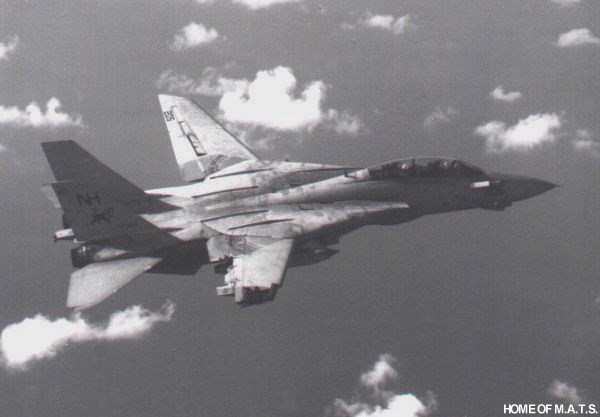
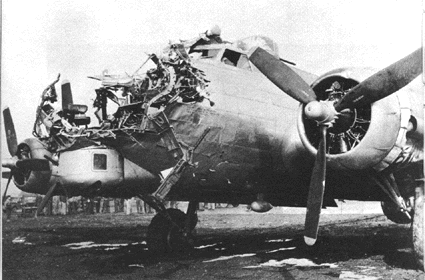
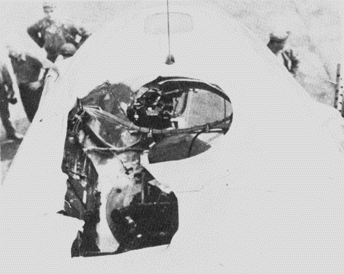
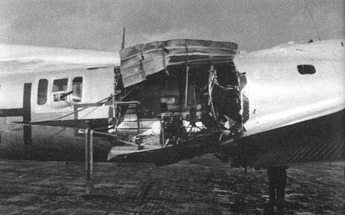
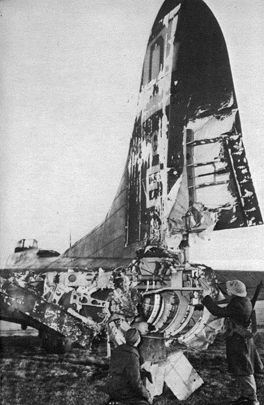

 ).
).
selon le livre de Paul T. Gillchrist "CRUSADER!" il y a eu au moins (dont il a eu connaissance, en fait):OldNick a écrit :Pour le A7 Corsair II, je ne sais pas, mais il y a eu au moins 4 vols de f8 Crusader avec ailes repliees... Je dois avoir aussi un photo qui traine sur mon DD a la maison ou on voit un F4 en vol, ailes repliees...
Oui, c'est bien un jet dans mes souvenirs:yes:Arekushi a écrit :Un Corsair qui vole ailes pliées ce serait TRES étrange. A moins que tu ne parle du jet et qu'alors je sois complètement à coté de la plaque.
Aru

Warlordimi a écrit :Tomcat cabriolet

